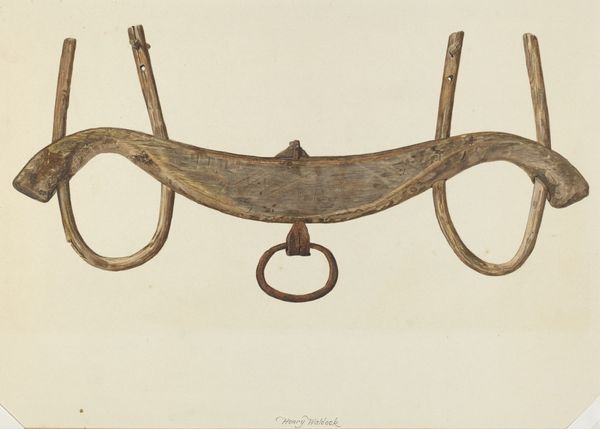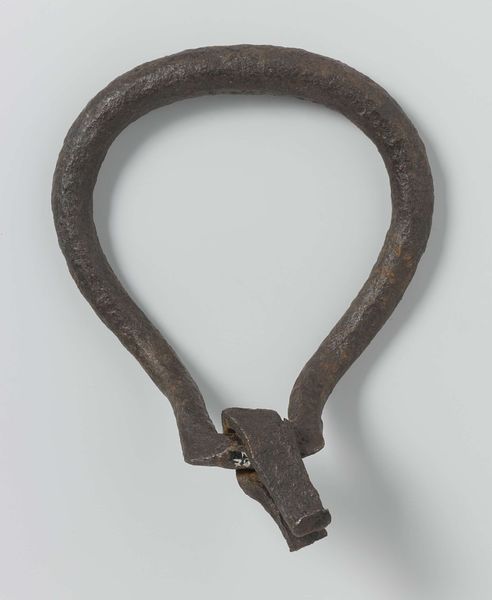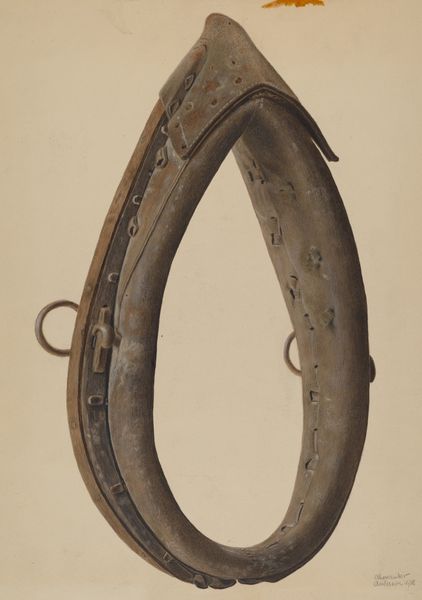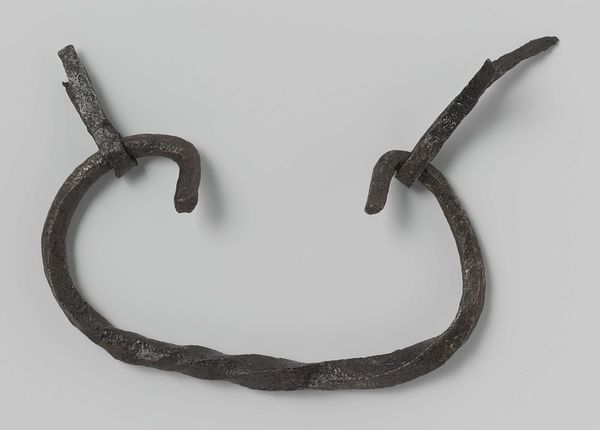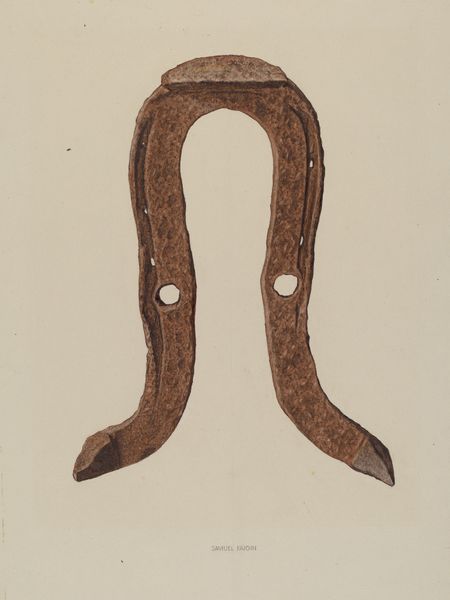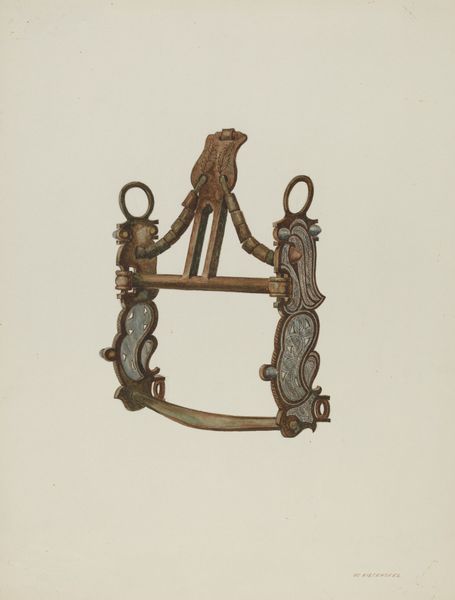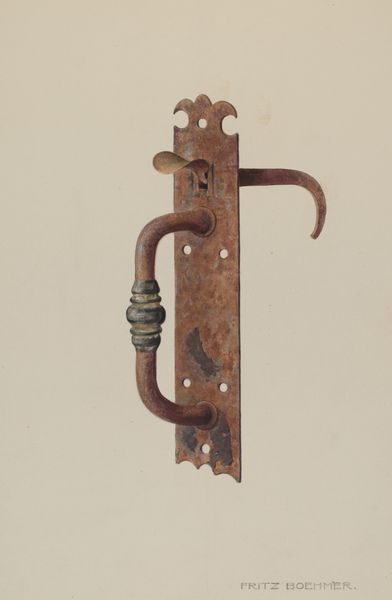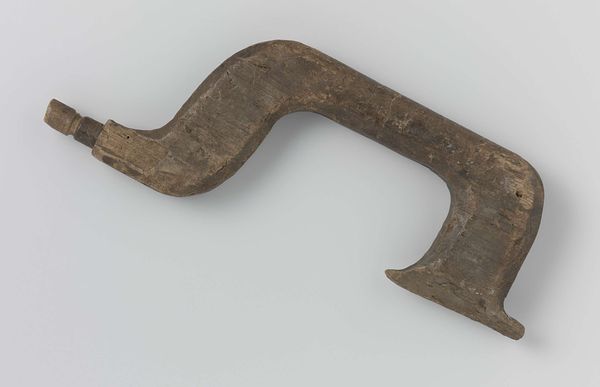
drawing
#
drawing
#
watercolour illustration
#
watercolor
#
realism
Dimensions: overall: 22.9 x 30.5 cm (9 x 12 in.) Original IAD Object: 28" wide; 24" high
Copyright: National Gallery of Art: CC0 1.0
Editor: So this watercolor drawing, “Oxen Yoke,” dates back to around 1937 and is by Earl Butlin. It’s striking how this simple object, rendered in watercolor, speaks volumes about rural life and agricultural labor. What strikes you most about this piece? Curator: Well, as a materialist, I'm drawn to the yoke itself as a manufactured object, and less as an idealized symbol of rural life. Consider the labor required to fell the tree, season the wood, and then shape it into this particular form. It is such a practical, well-engineered piece of equipment. What can we learn from considering that labor? Editor: That's a great point. It’s easy to overlook the human effort embedded in creating functional items like this. The tool highlights a relationship between the handler, the animal and the natural resources. And those raw materials had to come from somewhere. It makes you think about land use, doesn’t it? Curator: Precisely! It's a clear articulation of labor’s relation to nature under particular social conditions. What kind of choices and systems would enable or disable that construction? Editor: That connects to how seemingly simple tools embody entire economies. What's interesting, though, is the elevation of a functional farm tool through the art form of a watercolour illustration. What do you make of that contrast? Curator: This contrast really highlights a shift in the artistic and cultural perspective towards representing labor and craftsmanship. How labor moves between artistic representation and social function becomes fascinating here, because suddenly the viewer is consuming labor through art itself, not directly from farm or field. How did the artistic market or institutional support enable artists to take mundane production and center them in art? Editor: I see what you mean. The image asks us to contemplate the unseen network and social conditions surrounding something seemingly as rustic and traditional as an Oxen Yoke. Curator: Exactly. It pushes us to think critically about production, value, and the role of art in representing—or obscuring—the material realities of life. Editor: Well, now I definitely see it more than just an image. Thinking about the material construction really brings the human and social element forward! Curator: Yes! And it reveals the complex layers of meaning behind seemingly simple objects.
Comments
No comments
Be the first to comment and join the conversation on the ultimate creative platform.
